Last updated on March 2nd, 2025
When your pressure drops too low, the boiler will stop working, which means no heating or hot water. The pressure should be between 1 and 1.5 bar when the radiators are cold. I have been repairing and servicing boilers for over a decade and have fixed many boiler pressure problems.
Worcester boiler pressure explained
Worcester boilers have a safety device called a pressure relief valve (PRV). If the pressure reaches 3 bar the PRV will open and the water will be let out as a safety precaution, the pressure gauge will drop to zero.
If your pressure is under 1 bar, you should increase it. If it’s over 1.5 bar when the heating is off and the radiators are cold, you should reduce it. The boiler pressure can rise to over 2 bar when the heating is on. This is perfectly normal as the heat expands the water inside the radiators when the heating is turned on.

Boiler pressure too low
Low boiler pressure is very common and can cause your boiler to stop working. If your pressure becomes too low you need to repressurise it. If the pressure drops below 1 bar you should increase it.
How to increase the pressure:
- Open one valve fully (only if there are two valves)
- Open the other valve slowly until you can hear the water
- When the pressure has reached 1 to 1.5 bar close both valves
- Reset the boiler (if needed)
- Turn the heating on
Do not open both filling loop valves fully straight away as the water pressure in the house might be too much for the boiler and cause the pressure to shoot up too high.
Repressurising with a key
Unfortunately, some idiot at Worcester Bosch thought it would be a good idea to use a key to repressurise their boilers. Thankfully modern Worcester boilers don’t use a key to increase the pressure anymore.

How to repressurise a Worcester boiler with a key:
- Insert the white plastic key
- Turn the white square plastic knob anti-clockwise (like a tap) to open the filling loop and let some water in
- Keep turning the white square plastic knob until you can hear the water
- When the pressure has reached 1 to 1.5 bar close the valve
- Reset the boiler (if needed)
- Turn the heating on
Repressurising without a key
To increase the pressure on a Worcester boiler without a key you must:
- Use (or fit) an external filling loop
- Use the new easy fill filling link on modern Worcester combi boilers
How to repressurise with external filling loop:
- Open one valve fully (only if there are two valves)
- Open the other valve slowly until you can hear the water
- When the boiler pressure has reached 1 to 1.5 bar close both valves
- Reset the boiler (if needed)
- Turn the heating on
Do not open both filling loop valves fully straight away as the water pressure in the house might be too much for the boiler and cause the pressure to shoot up too much.
How often should you need to repressurise?
You shouldn’t need to repressurise your boiler at all. A pressurised heating system is sealed so if you need to increase the pressure regularly then the water is getting out. If you have to repressurise once or twice a year I wouldn’t worry about it.
Worcester filling loops
There should be one of these types of boiler filling loops under your boiler:
- A keyhole for a plastic key with a white square knob to turn: This knob will need turning like a tap to open and close.
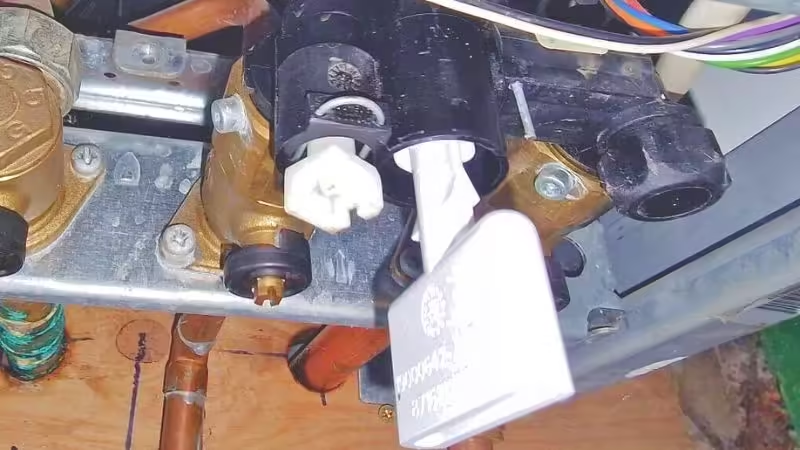
- Easy-Fill filling link with blue handle: These are on the latest Worcester boilers (thankfully). This will simply need to be pulled down to top up and then released to stop filling.
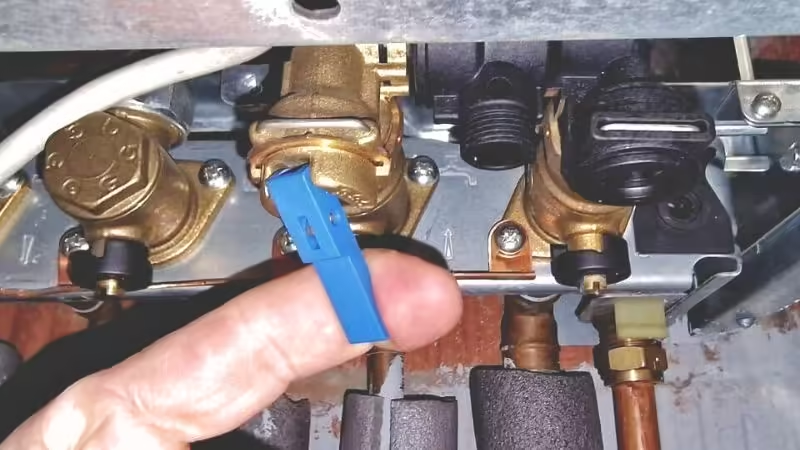
- An external filling loop:
A filling loop will be built in on the bottom of your boiler on most modern and small combi boilers, but there could also be an external filling loop on the pipework.
Usually, this is below the boiler but there could be an external flexible filling loop anywhere on the heating system, sometimes hidden away in cupboards or behind boxing.
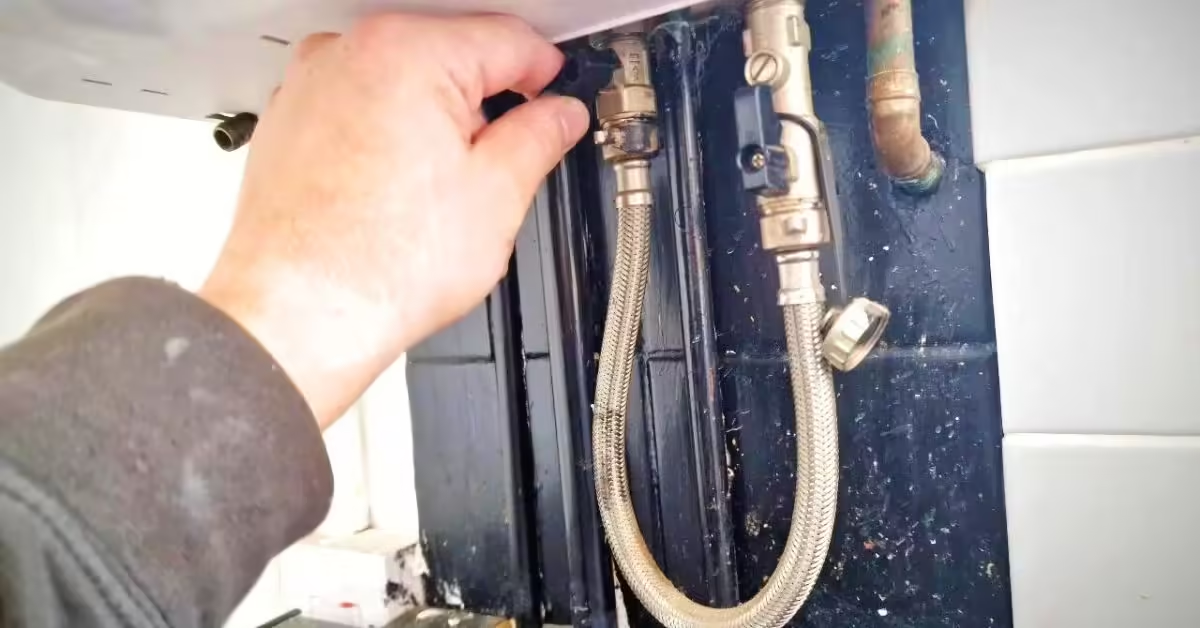
Boiler pressure too high
There are many reasons for a boiler’s pressure to be too high. If the pressure reaches 3 bar the PRV will let the water out. So, if your pressure is above 1.5 bar when the heating is and the radiators are cold, you should reduce it. To reduce the pressure you must let some water (or air) out of the heating system.
How to reduce boiler pressure:
- Bleed a radiator
- Open a drain off valve
- Open the pressure relief valve
- Crack a nut
- Magnetic filter
The first thing you should do to reduce the pressure is bleed the air out of every radiator. There might not be any but if there is, removing it will drop the pressure. Bleeding water out of one radiator is the easiest way to reduce boiler pressure but also the slowest.
Boiler keeps losing pressure
A boiler that keeps losing pressure means there’s a problem that needs to be fixed.
Most common reasons:
- A Leak on the central heating system
- The expansion vessel has lost its air
- Pressure relief valve passing water
- Filling loop open
You should check if the pressure is rising to 3 bar when the heating is on to narrow down the problem. If the pressure is dropping to zero without rising too high first, you most likely have a leak somewhere on the system.
Worcester boiler guides
Summary
If your boiler pressure is too low or too high, fixing it is important. Repressurising a Worcester boiler is an easy job. It can save you from paying a plumber to do an easy task.
If you have to keep repressurising your boiler, you should get that problem found and fixed as soon as possible.
Have any questions? Drop them in the comments below, I’ll do my best to help! If you found this post helpful, don’t forget to share it with others who might benefit.
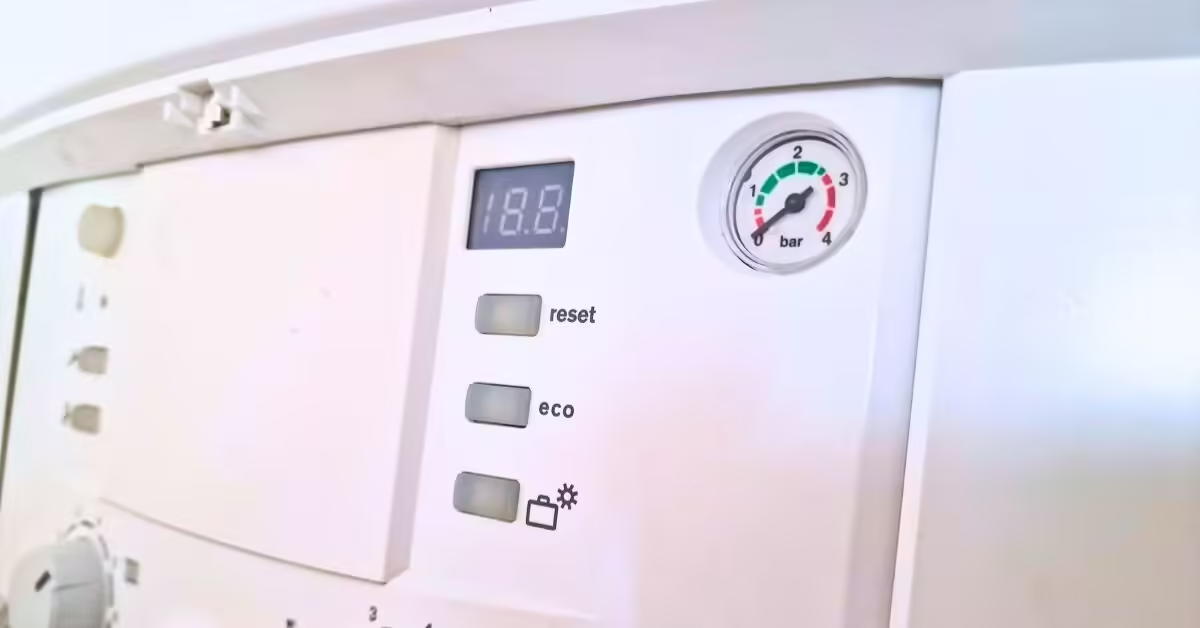

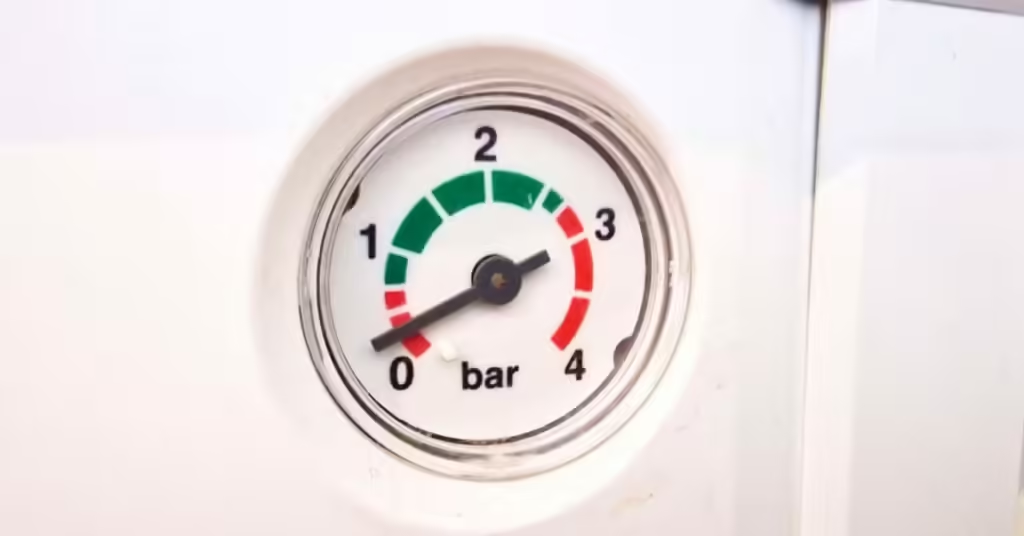
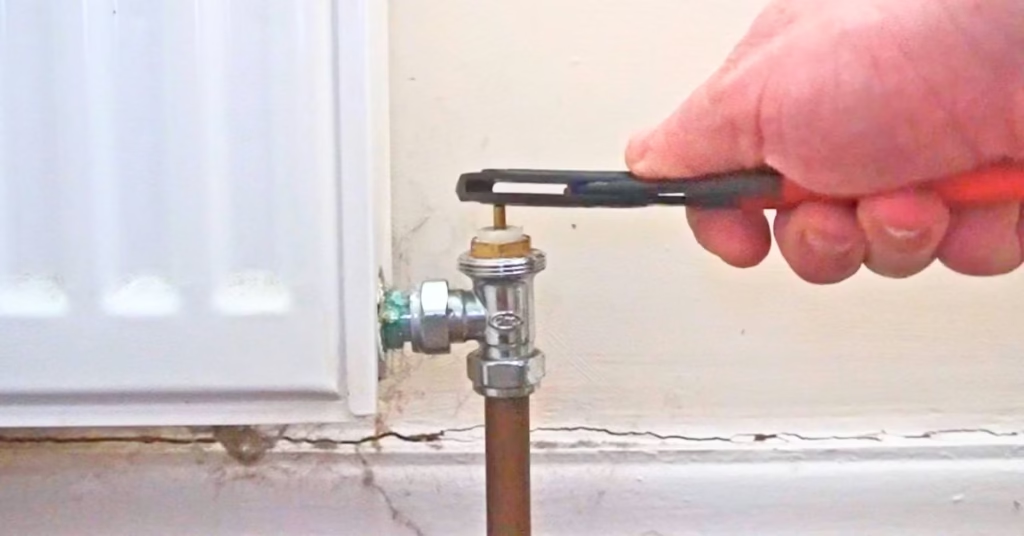

You are a star Steve. I just tried to re pressurise but I failed. I kept turning the white knob but needle didn’t move, stayed at about 1. The heating was not on at that moment. Any ideas?
Hi Mili, 1 bar is fine. Not sure why it’s not moving. A few possibilities are the key isn’t in properly, the filling loop is faulty, or the water pressure in the property is only 1 bar which means you won’t be able increase the boiler pressure to over 1 bar.
my worcester boiler pressu.re when on is 2.2 bar is this ok. thanks jim
hi Jim, yeah, 2.2 is fine when the heating is on
Hi, I have a Worcester greenstar 4000 the pressure is low and pulling the blue lever isn’t doing anything, I managed to increase the pressure 0.3 bar in 45 mins!! Is there something else I could do??
You could check the copper pipe outside to see if water is coming out. If not then it sounds like there might be a problem with the filling loop or really low water pressure in the property.